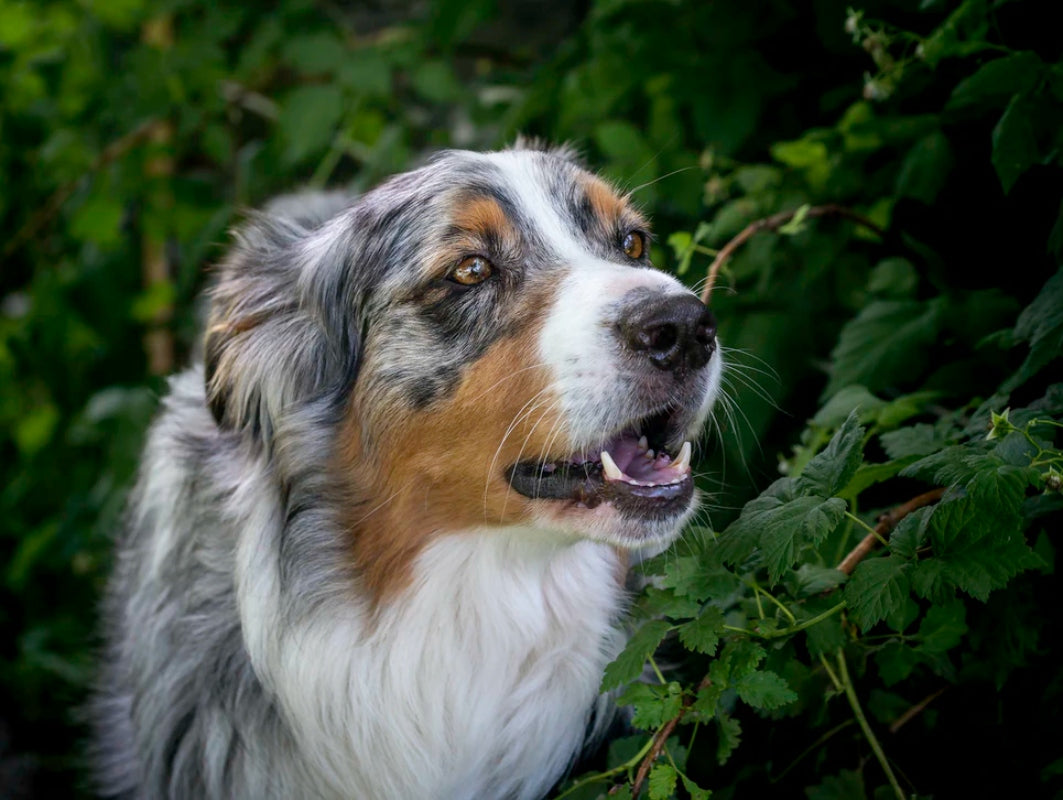
Whether you’re new to raw feeding, have been feeding your dog a raw diet for a while, or are simply “raw-curious,” it’s likely that you’ve heard a lot of objections about this form of canine cuisine. After all, we don’t eat raw meat, so why should our pets? In this blog post we debunk ten common misconceptions about raw dog food diets.
If you’re searching for the finest quality raw dog food available anywhere, look no further than Raw K9. Our complete beef meals, beef bundles, ultimate bundles and other products provide your best friend with a nutritious and delicious feast that will have them licking their bowl clean. Don’t believe us? Just hear what our loyals customers have to say. Read on to discover the truth behind ten popular raw feeding myths, then browse our products today!

Because harmful bacteria from raw meat can cause salmonella in humans, many people believe that the same is true for dogs. In reality, salmonella can only survive in higher pH conditions (4-8+) and requires at least 12 hours to reach incubation. Dogs’ stomachs have very high acidity (about pH 1) while their digestive system is very short. Therefore, any harmful bacteria from raw meat is soon killed when ingested by a dog and passed within 4-6 hours as waste.

While it is true that humans have undeniably changed dogs, we have only changed their external appearance and temperament, NOT their internal anatomy and physiology. In fact, dogs are so much like wolves physiologically that they are often used in wolf studies and as a physiological model for wolf bodily processes. According to Robert K. Wayne, Ph.D., "The domestic dog is an extremely close relative of the gray wolf, differing from it by at most 0.2% of mDNA sequence..." Even the Smithsonian Institute recently reclassified domestic dogs as Canis lupus familiaris, placing it in the same species as the gray wolf, Canis lupus.

Continuing the dog vs. wolf thought process from the previous myth, some people argue that dogs are not as efficient as wolves in digesting raw meat and bones due to weaker digestive enzymes from centuries of domestication. Yet, as discussed previously, dogs have nearly identical anatomies and physiologies to wolves.
In fact, it is highly processed, grain-based foods that have come to suppress dogs’ immune systems and cause an underproduction of the enzymes necessary to break down raw meaty bones. This does NOT mean, however, that dogs do not have those enzymes. Those enzymes are present in all dogs, and, once taken off of their kibble-based diet, they quickly return to proper working levels.

This one causes contention even among raw foodies. While all raw feeding proponents believe that dogs need raw meats, some also believe that dogs need fruits, vegetables, and supplements as well. For instance, the Prey Diet follows the philosophy that dogs are omnivores and only need to eat a diet of meat, offal (organs), and bones, while the BARF (Biologically Appropriate Raw Food) Diet contends that pets are omnivores and require fruits and vegetables as well. Choosing which diet you prefer for your canine is ultimately a matter of personal choice.

Kibbled dog foods have only been around for the last 60 years or so — way too short for an evolutionary adaptation to take place. So, what were dogs eating before the advent of kibble? Raw meat! Throughout much of history, cooked food was a precious commodity that very few people would waste on something like a dog, since, at the time, they had a much lower social status than they enjoy now. Before this? Wolf-dogs hunted with their masters and hung around nomadic camps, receiving whatever raw meat, bones, and offal were left over.

In fact, the very act of cooking meat destroys or alters many of its essential proteins, vitamins, fats, and minerals. This decreases their bioavailability, and is the reason why processed pet and home-cooked pet foods require the addition of supplements. Finding the right balance of vitamins and minerals is incredibly difficult, and often results in oversupplementation.

Technically, this one is true, with a caveat: all-meat diets are NOT balanced; you cannot feed your dog a diet of just meat and expect them to do fine. Your dog needs bones and organs as well to obtain all of the proper nutrients. At Raw K9, all of our complete beef meals and other raw mixes contain organs, bones, or an all-natural bone replacement blend to ensure a complete, optimally balanced meal.

This is false logic; dogs live longer today because of improved social status and medical care. For most of history, dogs were not considered to be the valued companions and family members that they are now. Instead, dogs were used merely to guard houses and/or gather livestock. Once they could no longer do their job, they were either retired or disposed of.
Today, dogs enjoy better, less taxing lives. They get to sleep inside with their owners, enjoy the latest advances in veterinary care, and be doted on by their loved ones. Nutrition has had a negligible role in increased longevity other than, perhaps, obstructing it; health problems previously unheard of in dogs — diabetes, cancer, IBS, arthritis, obesity, etc. — are now becoming prevalent due to processed food-related diseases

Dogs are natural hunters. They are, by nature, carnivorous. Both kibble-fed and raw-fed dogs may hunt and kill small prey, particularly if they are a breed with a higher drive to do so. Prey drive is determined by a combination of genetics, training, and behavior management — not diet.

No, nope, no way. In fact, toy breeds and small dogs need to eat bones more than most other kinds of dogs. The teeth of many small dogs are drastically overcrowded, making them more prone to periodontal disease — their bad breath is evidence of this fact! Periodontal disease can develop rapidly, spreading harmful bacteria to the rest of their body, including the heart, lungs, and brain.
The key to feeding a small dog a raw meat diet is properly sizing each meal. Steer clear of small bones that your dog could easily choke on, such as chicken wings, instead opting for mid-sized options like our bison patella bones. You will also want to avoid giving your small dog an entire slab of meat; instead, reach for one of our popular ground mixes or smaller whole proteins, such as our beef-stuffed quails.
Order Our Optimally Balanced Raw Dog Food Now!
At Raw K9, we know just how important it is to look after the welfare of your best friend, and just how devastating it can be when your dog suffers from allergies, skin issues, and other health problems. A raw diet can provide countless benefits to your dog, including improved digestion, a healthier skin and coat, better dental hygiene, a leaner build, and more. Browse our premium raw dog foods now to get started.




